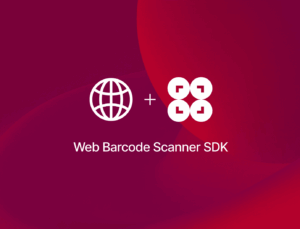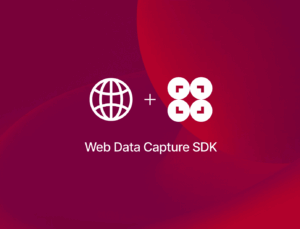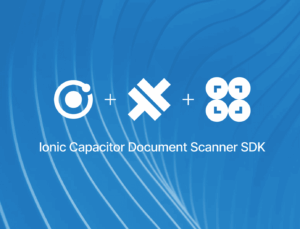When smartphones first arrived in the late 2000s, there were only two options when it came to mobile app development: native and hybrid. You could either use the platforms’ own programming languages to create software specific to them (native approach) or develop a web application and wrap it in a sandbox browser (hybrid approach).
Nowadays, cross-platform frameworks offer an attractive third option. They aim for a near-native user experience while enabling developers to reuse as much code as possible for different platforms.
Which of these approaches is the right one for you? Let’s take a look at all three of them, together with the main frameworks and programming languages available to you.
Native app development
The key advantage of native development is that it has the potential to produce the best user experience. Native apps often have a faster response time and offer more functionality. This can translate to higher app store ratings and thus higher visibility.
The main disadvantages are cost and the longer time-to-market. If you’re developing an app for iOS and Android, for instance, you will essentially develop the entire app twice. Very little of the work done for one platform can be reused for another, and you may even need separate teams. Of course, if you’re developing for one platform exclusively, then native development is the logical choice.
Native iOS development
The main programming languages used for iOS development are Swift and Objective-C.
Swift was developed by Apple in collaboration with the open-source community. Inspired by modern programming languages like Python and Ruby, it features a human-friendly syntax and a plethora of additional capabilities. If you want to build an iOS application from scratch, Swift is your best choice.
If you work with iOS apps from 2014 or earlier, chances are that they are still written in Objective-C. Developed in 1984 and later adopted by Apple as the standard programming language for macOS, Objective-C strongly resembles C. Due to its maturity, you can find many helpful resources online that help with potential problems.
Native Android development
For native Android development, there are two main choices: Java and Kotlin.
Java has been with Android since its launch in 2008. It is a pure object-oriented language that compiles to bytecode and is interpreted at runtime by a Java Virtual Machine (JVM) running on the Android OS. Developers can choose among many Java frameworks that make app development easier.
Kotlin was declared the official language for Android app development by Google in 2019 and is currently the most widely-used language for the platform. It is interoperable with Java and can call all of its libraries. If you already know Java, learning Kotlin should be easy.
Hybrid app development
Developers opting for a hybrid approach first build a web application using a JavaScript framework like React, Angular, or Vue, then wrap it in a WebView. The WebView – essentially a sandbox browser – runs the web app on the target mobile platform and gives it access to native features like the camera or accelerometer. This is especially useful if you want to have your application accessible both via a web browser and as an app store download.
The downside of hybrid apps is that their performance cannot match natively developed software. On the other hand, they can be deployed as PWAs (progressive web apps) so users can install them right from their browsers.
Ionic, Cordova, and Capacitor
The Ionic framework was released in 2013. It allows developers to create web applications that also run on platforms like iOS and Android using their native UI systems.
Apps developed with Ionic were traditionally deployed on different platforms using the Cordova runtime. However, Ionic’s creators have since introduced their own alternative called Capacitor that offers several improvements.
Cross-platform app development
Like hybrid frameworks, cross-platform development tools use a shared code base to target multiple operating systems. Traditionally, this meant inferior performance compared to natively developed apps. This has changed in recent years, and in the right hands, today’s cross-platform frameworks can achieve near-native performance on all target platforms.
Xamarin and .NET MAUI
Xamarin has been around since 2011. However, its roots go as far back as 2001, with efforts to develop a Linux version of Microsoft’s .NET Framework.
In 2016, Microsoft bought the company Xamarin, along with the SDK of the same name. Xamarin thus became part of Microsoft Visual Studio and switched to the open-source MIT license.
With Xamarin.Forms, you can write apps in C# for Android, iOS, macOS, and Windows using a single shared code base. With some additional tweaking in the platforms’ own programming languages, you can achieve near-native performance.
In 2022, Microsoft officially released a designated successor, the .NET MAUI framework. It is set to replace Xamarin entirely by May 2024, at which point Microsoft will end support for all Xamarin SDKs.
Like Xamarin, .NET MAUI lets developers create native user interfaces and applications for iOS, Android, macOS, and Windows using a single codebase. However, MAUI promises better performance, increased productivity, and a more streamlined developer experience than Xamarin.Forms.
React Native
React Native is a framework for developing mobile applications in JavaScript that nonetheless render natively. Both the framework and the library are free, open-source, and developed and maintained by Meta.
React Native allows developers to write their mobile applications in JavaScript while having access to native UI elements. This not only has performance benefits, it also gives the app a native look and feel. At the same time, a large part of the code can be shared between platforms, which facilitates simultaneous iOS and Android development.
Flutter
Flutter, a cross-platform framework which uses the programming language Dart, brings two key advantages to the table: It is easy to learn and delivers near-native performance on most devices.
Firstly, Flutter is known for its intuitive structure and excellent documentation. This means that in no time, your team can begin developing a single codebase for applications that run on all major platforms.
Secondly, Flutter directly communicates with the graphics engine layer, which gives apps a performance boost. Interfaces typically run at 60 frames per second or even 120 frames on capable devices. This is partly due to Dart’s runtime garbage collector, which efficiently allocates memory for the many objects Flutter renders on-screen and destroys later.
How to find the best approach for your app
Now that you have an overview of the different approaches to app development, the next question is: Which one should you choose?
Ultimately, a decision like this depends on a host of factors. However, you can start by considering the following questions:
- Do you want to publish your app for more than one platform? If yes, a hybrid or cross-platform approach can save you time and money in the long run. If not, native development is your best option.
- Is having a web app your main priority? If so, a hybrid approach makes the most sense. Your developers can focus on perfecting the app’s web functionality and deploy it as a mobile app using an app runtime like Cordova or Capacitor.
- Is performance critical? If fast reaction speeds and short loading times are vital for your use case, you should probably go with native development. If you’re also targeting several platforms, consider using a high-performance cross-platform framework like Flutter.
- Do you already have the right talents? Take into account which frameworks and programming languages your team is already familiar with. Their expertise with the tools available to them heavily influences development time and total costs.
One of our main goals at Scanbot SDK has always been to give our customers as many options as possible for integrating our products into their mobile or web applications. That’s why we provide native, hybrid, and cross-platform developers with SDKs for every framework mentioned in this article. We also add new platforms to our portfolio when there is demand from our customers.
Head to our Developer Portal to learn more.



